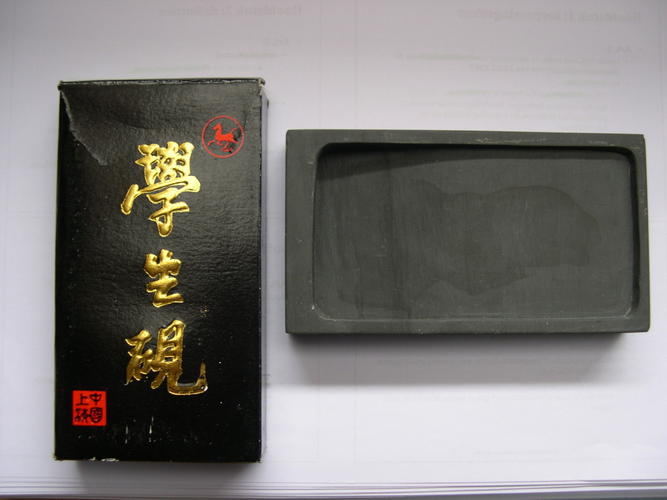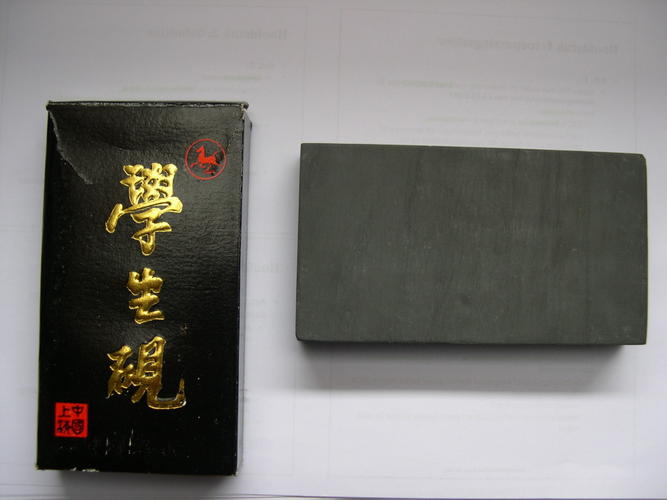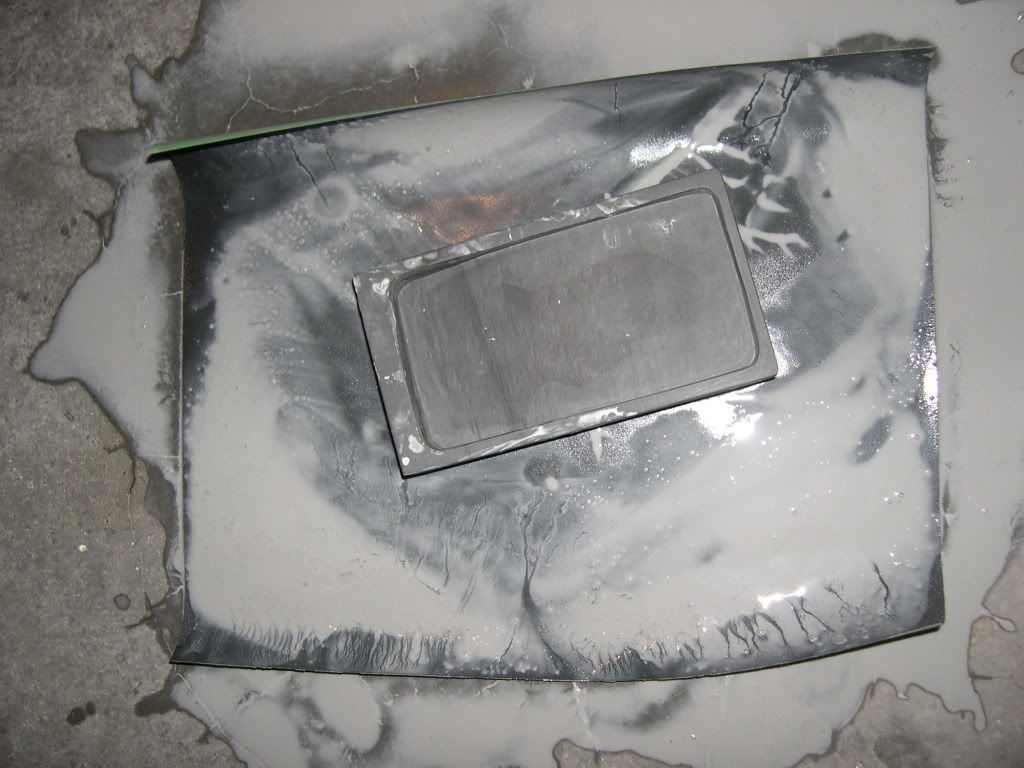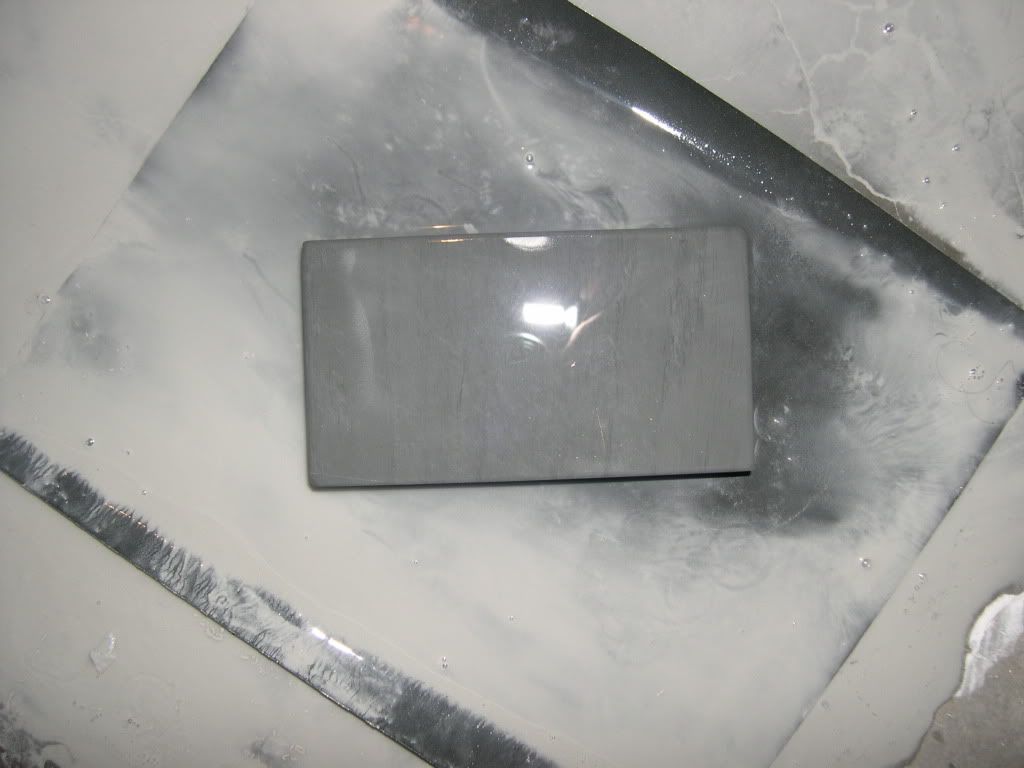Results 1 to 10 of 18
Thread: closet discovery
-
06-22-2011, 12:13 PM #1Junior Member

- Join Date
- Jun 2011
- Location
- Belgium
- Posts
- 20
Thanked: 1 closet discovery
closet discovery
So, at the risk of asking some completely obvious and stupid questions:
When looking at all the pictures of stones on this site, I was thinking "I have seen this before". I went digging in my closet and out came a calligraphy set my father brought me from china. In the set was a stone recipient to prepare the ink in. The recipient was supposed to be filled with an ink base and than worked with another stone to release its beneficial components (something whispers "slurry" in my head):

When turned over, it looked exactly like one of the many stones I saw on this website:

Now for my questions:
- Is it anywhere near possible that the stone could be used for honing?
- Are there any ways to test the stone's quality's without destroying a razor?
- The stone is not completely flat. How can I flatten it?
-
06-22-2011, 12:24 PM #2

Yes, nothing precludes it.
It is unlikely to destroy the razor, even if it is a coarse stone, provided you are proficient at honing, though I wouldn't use my best razors for testing.
Either with a lapping plate such as a DMT, or using sandpaper against either granite or glass as the Wiki recommends. I'd be interested to read your results. Looks like a natural, possibly a Chinese waterstone (PHIG).
-
06-22-2011, 12:56 PM #3

This may help:
http://straightrazorpalace.com/hones...ification.html
-
06-22-2011, 01:04 PM #4Junior Member

- Join Date
- Jun 2011
- Location
- Belgium
- Posts
- 20
Thanked: 1
Aha, so it has been done before!
To be honest: I am completely new to honing and have no clue as for what I'm looking for in a stone. Will probably flatten the underside up and take it from there...
The stone is definately a chinese natural stone, but I have no idea what type it might be.
-
06-23-2011, 01:26 PM #5Junior Member

- Join Date
- Jun 2011
- Location
- Belgium
- Posts
- 20
Thanked: 1
So I got to the hardware store today and picked up some sheets of 320 grit water resistant sanding paper. Then I spent 40 minutes on my knees in the garage, flattening the inkstone to perfection. The stone quickly produced a nice milky light grey slurry:

The result: a nice and flat stone with rounded edges:

What do you guys think? Any expert honers from Belgium around here? I'm willing to bring or ship the stone over for a test run...
-
06-23-2011, 02:09 PM #6
-
06-23-2011, 02:44 PM #7

It is certainly not a Belgian stone. If you thought it could have been a Belgian Blue as I am inferring, the absence of a purple slurry precludes this possibility; aside from this it does not look like one.
If it is Chinese, it could be a PHIG - I have never used one, but many here have who I hope will chime in.
-
06-23-2011, 03:04 PM #8
-
06-23-2011, 03:14 PM #9Junior Member

- Join Date
- Jun 2011
- Location
- Belgium
- Posts
- 20
Thanked: 1
-
06-23-2011, 03:37 PM #10

since obviously this is the more contemporary thread, I will repost what I said in the "odd stone" thread

Interestingly enough a japanese friend of mine who is also a retailer for japanese kitchenware and natural stones talked to me about the PHIG or Chinese 12k I showed him.
He didnīt know such thing exists and was interested, so I lend it to him. I also gave him all the information I had. The ebay seller I got it from two years ago
claimed the stone was mined in Guanxi. The friend of mine (a highly enthusiastic stone-addict) checked his sources and came back to me saying in Guanxi there would be no quarry capable
of producing these kinds of stones but his source immrdiately recognized it as a stone used for the preparation of ink.
I have no idea wether that is true or not, nor do I know what kind of source that was.
Looking at the second picture, hell this could be a beat up C12k with a hole in it ...


 LinkBack URL
LinkBack URL About LinkBacks
About LinkBacks






 Reply With Quote
Reply With Quote

